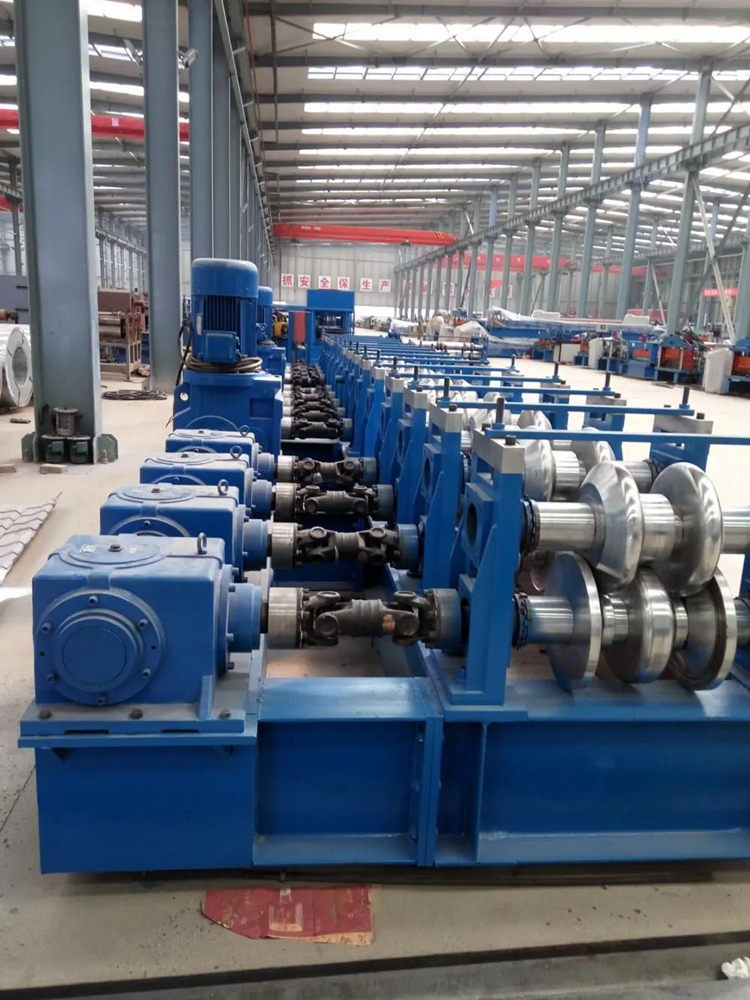
Exploring the Tee Forming Machine Revolutionizing Manufacturing
In the realm of manufacturing and industrial processes, the tee forming machine plays a critical role in shaping and fabricating components used in various applications. As industries continue to evolve, the need for efficient and precise equipment has never been more pronounced. The tee forming machine stands out as a crucial tool that not only enhances production efficiency but also ensures the accuracy and consistency of manufactured products. This article delves into the working principles, benefits, applications, and future prospects of tee forming machines.
Working Principles
A tee forming machine operates on the principle of bending metal sheets or rolls into a T-shaped profile. This process involves several stages, including feeding, forming, and finishing. The raw material, typically metal sheets or strips, is fed into the machine, where it is subjected to a series of mechanical processes. The machine employs specialized tooling to bend and shape the material into the desired tee profile. Advanced CNC (Computer Numerical Control) technology is often integrated into these machines, allowing for precise control over the forming process, thus ensuring that each piece meets stringent specifications.
Advantages of Tee Forming Machines
The adoption of tee forming machines presents several advantages that make them indispensable in modern manufacturing. First and foremost, these machines significantly increase production efficiency. By automating the forming process, manufacturers can reduce labor costs and minimize the time required to produce components. This efficiency translates into a faster turnaround for projects, allowing companies to meet tight deadlines and increase their output.
Moreover, tee forming machines offer remarkable accuracy. Traditional forming methods often result in variability and inaccuracies that can compromise product integrity. However, with the precision of CNC technology, manufacturers can achieve consistent dimensions for every piece produced. This accuracy is critical in industries where even the slightest deviation can lead to product failure or safety hazards.
Another significant benefit is the versatility of the tee forming machine. These machines can be adjusted to accommodate various materials, including different types of metals and thicknesses. This adaptability allows manufacturers to respond quickly to changing market demands and production needs.

Applications Across Industries
Tee forming machines find applications across a wide range of industries. In the construction sector, they are used to produce structural components, such as beams and columns, that are essential for building frameworks. The automotive industry also relies on tee forming machines for producing parts such as brackets, supports, and other structural components critical to vehicle assembly.
Additionally, the HVAC (Heating, Ventilation, and Air Conditioning) industry benefits from tee forming machines when creating ductwork and other airflow components. The machinery's ability to create precise shapes ensures that these vital components fit seamlessly within systems, promoting efficiency and functionality.
The Future of Tee Forming Machines
As technology continues to advance, the future of tee forming machines looks promising. Innovations such as artificial intelligence and machine learning are beginning to influence the manufacturing landscape. By integrating these technologies, manufacturers can enhance machine capabilities, optimizing production schedules and reducing waste.
Furthermore, the growing emphasis on sustainability in manufacturing is driving the development of more energy-efficient and eco-friendly tee forming machines. By reducing energy consumption and minimizing material waste during the forming process, manufacturers can contribute to a more sustainable industrial ecosystem.
In conclusion, the tee forming machine plays a vital role in modern manufacturing, offering efficiency, accuracy, and versatility across various industries. As technologies evolve and market demands shift, these machines will continue to be at the forefront of innovation, shaping the future of manufacturing and supporting the ever-growing needs of various sectors. Whether in construction, automotive, or HVAC industries, the impact of tee forming machines is undeniable, making them invaluable assets in the quest for optimized production processes.